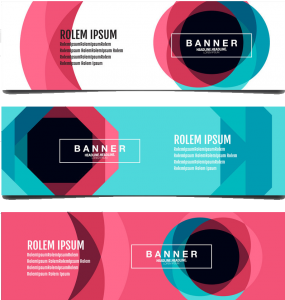Looking for the perfect place to start your blogging journey?
Whether you just want to share short posts, upload tons of creative content, or even run a full eCommerce store, there’s a platform designed to match your needs.
One thing you should know: blogs remain one of the highest-return marketing tools out there, beating many other channels when it comes to long-term value. And the best part? With the right monetization platform for bloggers, you’re not just writing for fun—you’re building a space that can also earn you real income.
From WordPress to Write.as, we’ve gathered some of the best options available so you can easily choose the monetization platform for bloggers that helps you grow, engage your audience, and kickstart a successful blogging career in 2025.
Table of Contents
Toggle10 Powerful Monetization Platforms

#1. WORDPRESS
If you’ve ever thought about starting a blog, chances are you’ve already heard of WordPress. It’s huge—powering about 43% of all websites on the internet. From hobby writers to small business owners, and even some of the biggest brands in the world, WordPress is the go-to choice.
So, what makes it stand out? Well, WordPress gives you two main options:
#1. Self-hosted WordPress (WordPress.org): You’ll need your own web hosting provider and a bit of setup, but this version gives you full control.
#2. Hosted WordPress (WordPress.com): This one is beginner-friendly, with hosting and setup already handled for you.
That’s why WordPress is often seen as one of the best monetization platforms for bloggers—you can start small, then grow into something much bigger without switching platforms.
Why People Love WordPress
#1. You can fully customize your blog.
#2. Thousands of free templates, themes, and plugins are available.
#3. Tons of tutorials, guides, and webinars to help you learn.
#4. Built-in tools for analytics, SEO, and even site monetization features.
#5. Mobile apps (Android & iOS) so you can blog on the go.
What’s Not So Great
#1. The self-hosted version takes a little technical knowledge.
#2. Hosting, domains, and premium themes/plugins can add up in cost.
#3. The free WordPress.com plan doesn’t allow a unique domain name.
#4. Payment features include a 10% commission fee plus standard processing fees.
#5. Some advanced tools are locked behind paywalls.
Pricing at a Glance
Free plan: $0
Starter plan: $9/month ($4 billed annually)
Explorer plan: $18/month ($8 billed annually)
Creator plan: $40/month ($25 billed annually)
Entrepreneur plan: $70/month ($45 billed annually)
Enterprise plan: Starts at $25,000 per year
With WordPress, you can start out for free and upgrade as your blog grows. It’s a flexible monetization platform for bloggers because it allows you to turn simple posts into a full-fledged business over time.
#2. MEDIUM

Medium is all about the power of words. Unlike many other platforms, it keeps things super simple: no ads, no messy layouts, and no overwhelming design choices. Just your writing, front and center.
The platform is home to everyday writers, thought leaders, and even big names like former U.S. president Barack Obama. What makes Medium stand out is that readers can highlight lines they love or comment directly on your writing – making it feel more interactive and community-driven.
As a monetization platform for bloggers, Medium works a bit differently. Instead of running ads, it rewards quality storytelling through the Medium Partner Program. This program lets you put some of your articles behind a paywall, and you get paid when members read them. Simple, clean, and focused entirely on your craft.
Here’s the breakdown:
Feature Details
#1. Ease of Use Extremely beginner-friendly. Just sign up and start writing – no tech setup required.
#2. Customization Very limited – you can’t change layouts much, but the minimalist design puts your words in the spotlight.
#3. Monetization Medium Partner Program pays you for stories that members read behind a paywall. It’s a unique monetization platform for bloggers who want to focus on writing instead of ads.
#4. Community & Interaction Readers can highlight, comment, and engage with your words directly.
#5. Apps Highly rated Android & iOS apps for writing and reading on the go.
#6. Ownership You don’t own your domain name – everything stays under Medium’s brand.
#7. Support Community-driven platform with help docs and resources.
Medium Pricing Plans:
Free account – $0
Member plan – $5 per month or $60 annually
Friend plan – $15 per month or $150 annually
Medium is perfect if you just want to focus on writing and earning from your words without worrying about design, ads, or tech stuff.
#3. BLOGGER

Blogger is one of the oldest and simplest blogging platforms, and it’s owned by Google. If you already have a Gmail account, you can jump right in and start creating your blog within minutes. You get a free domain name that looks like yourblog.blogspot.com, plus an easy-to-use dashboard for writing posts, uploading photos, and picking a theme that fits your style.
The best part? Blogger connects directly with Google AdSense, making it a ready-made monetization platform for bloggers who want to start earning money through ads without a complicated setup. It’s perfect for beginners who want something quick, free, and straightforward.
Your blog can store thousands of posts and images, and you’ll also have access to Google Analytics so you can see how your blog is performing. While customization options are limited, Blogger is still a strong entry point if you want to test the waters of blogging and start learning how monetization works.
Pros:
Super easy to set up with your Gmail account.
Comes with a free blogspot.com domain.
Beginner-friendly and simple to use.
Can store tons of posts and photos.
Built-in monetization opportunities with Google AdSense.
Integrated with Google Analytics for tracking performance.
Mobile apps for both Android and iOS.
Cons:
Limited customization and design flexibility.
Custom domains cost extra.
Fewer templates and third-party app integrations.
Google technically owns your published content.
Pricing:
100% Free (but you’ll need to pay if you want a custom domain).
If you’re new to blogging and want a monetization platform for bloggers that’s free, easy, and directly tied to Google’s ad network, Blogger is a solid choice to kickstart your blogging journey.
#4. SQUARESPACE
Squarespace is a website builder that makes it super easy to create a blog, portfolio, or even an online store. You don’t need to be a tech wizard to use it—everything runs on a drag-and-drop editor, so you just move things around until your site looks the way you want. It also comes with beautiful, modern templates that give your website that polished, professional look right from the start.
If you’re thinking long-term, Squarespace doubles as a monetization platform for bloggers, letting you not only share posts but also sell products, services, or digital content directly from your site. Plus, it’s packed with SEO tools, built-in analytics, and marketing features to help your blog grow and attract readers.
Squarespace also offers handy apps for Android and iOS, so you can manage your site from anywhere. The main downside is that customization is somewhat limited compared to coding your own site, and loading speeds aren’t something you control. Still, for most beginners (and even seasoned bloggers), Squarespace strikes a balance between simplicity and style.
Pros:
Super easy drag-and-drop editor—no coding needed.
Sleek, professional templates that look modern.
Built-in SEO tools to help people find your blog.
Analytics and marketing tools included.
Great mobile apps for Android and iOS.
Cons:
Customization is somewhat limited.
Fewer third-party extensions compared to WordPress.
You can’t fully control your blog’s loading speed.
Pricing:
Personal Plan: $23/month or $16/month (billed annually).
Business Plan: $33/month or $23/month (billed annually).
Commerce Basic Plan: $36/month or $27/month (billed annually).
Commerce Advanced Plan: $65/month or $49/month (billed annually).
Squarespace is more than just a site builder—it’s also a stylish monetization platform for bloggers who want to blog, sell, and build a brand all in one place.
#5. WIX
Wix is a super popular website builder that makes blogging fun and stress-free. Even if you’ve never written a single line of code, Wix gives you all the tools to create a blog that looks like a pro designed it.
With its Wix Editor, you can pick from thousands of stylish templates, drag and drop sections where you want them, and even use AI tools to help you generate content faster. For bloggers who want to turn passion into profit, Wix is also a strong monetization platform for bloggers, giving you options to grow and expand your blog into something bigger.
Why Bloggers Love Wix
#1. Easy to use – no tech headaches, just drag, drop, and publish.
#2. SEO, AI, and marketing tools to get your blog noticed.
#3. A huge collection of templates that make your blog look sleek and modern.
#4. Handy Android and iOS apps so you can post and edit on the go.
Things to Keep in Mind
#1. Once you choose a template, you can’t switch to another later.
#2. Limited control over advanced back-end settings.
#3. Free plan shows Wix ads, and those ads don’t make you money.
#4. Free version has limited storage space.
Pricing
Here’s what Wix offers if you want to go beyond the free plan:
Free plan – $0
Light plan – $17/month
Core plan – $29/month
Business plan – $36/month
Business Elite plan – $159/month
Enterprise plan – pricing depends on your project needs
If you’re looking for a flexible monetization platform for bloggers, Wix is worth considering because it lets you start free, test things out, and scale up when you’re ready.
#6. GHOST

If you’re the type of blogger who loves a clean, minimal, and professional vibe, Ghost might just be your dream home on the internet. It keeps things simple without unnecessary clutter, letting your words shine.
Ghost comes in two flavors—self-hosted and hosted (Ghost Pro)—so you can pick whichever fits your blogging journey best.
#1. Self-hosted Ghost
This option is free and open-source. That means you can download it, install it, and run your blog on your own hosting. The only catch? You’ll need some technical skills and a hosting provider to get started.
Pros:
Fully customizable.
Lots of products, services, and free themes.
No limit on how many members you can have.
Frequent software updates.
Cons:
You’ll need some technical know-how.
Hosting isn’t free.
No official Android or iOS apps.
#2. Ghost(Pro)
If you don’t want to mess around with servers and technical setup, Ghost(Pro) is the official hosted version. Here, Ghost takes care of hosting, backups, and updates while you focus on writing.
Pros:
Easy to use, even for beginners.
Comes with themes and built-in integrations.
Server maintenance and backups are included.
Weekly software updates.
Cons:
Still no mobile apps.
Starter plan has limited themes and customization.
Some advanced features cost extra.
Pricing (Ghost Pro):
Starter plan: $11/month ($9 billed annually)
Creator plan: $31/month ($25 billed annually)
Team plan: $63/month ($50 billed annually)
Business plan: $249/month ($199 billed annually)
Fashion: Keeping Your Blog Stylish
Ghost doesn’t drown you in hundreds of messy templates. Instead, it gives you sleek, minimal themes that make your blog look modern and polished—perfect if you care about design as much as content.
Why Bloggers Love It
Ghost shines as a monetization platform for bloggers because it allows you to build membership sites, offer paid subscriptions, and directly earn from your loyal readers. Unlike some platforms that overload you with ads, Ghost keeps the focus on you and your brand. For bloggers serious about growing their audience and income, Ghost isn’t just a tool—it’s a monetization platform for bloggers that puts you in control.
#7. TUMBLR
Tumblr is like a fun playground for bloggers who love mixing different kinds of content. Whether you enjoy posting videos, GIFs, music, photos, or even short text updates, Tumblr makes it super easy to share everything in one place. Think of it as blogging meets social media—fast, colorful, and full of creativity.
Because Tumblr has so many users, it can feel a little crowded. But that’s not always a bad thing—it means you’ve got a huge audience ready to discover your content. If you’re starting out and just want something free and simple, Tumblr is one of the best places to begin.
Pros
Comes with a Tumblr subdomain (yourblog.tumblr.com).
Really easy to use, even for beginners.
Smooth Android and iOS apps for mobile blogging.
Cons
You don’t get much room for design customization.
Since it’s popular, standing out can be tricky.
You’ll need to pay extra if you want your own custom domain or premium theme.
Pricing
Completely free to use.
Why Tumblr Works for Monetization
While Tumblr itself isn’t a full-fledged monetization platform for bloggers, it gives you a solid space to build your community, showcase your content, and attract an audience. Once you’ve got loyal readers, you can connect it to other monetization platforms for bloggers like Patreon or Ko-fi to start earning money. In other words, Tumblr is a great free stage—you bring the creativity, and then plug in the tools that help you get paid.
#8. WEEBLY
Weebly is more than just a blogging tool—it’s a full website builder designed for businesses and online stores. That makes it a smart choice if you’re serious about turning your blog into a money-making machine. You don’t need to know anything about coding—just drag, drop, and design your site the way you want.
Because Weebly connects smoothly with Square, it’s perfect for bloggers who want to sell products, services, or even digital downloads. This makes it one of the best monetization platforms for bloggers who want to go beyond writing and build a professional-looking online store.
Pros
Simple drag-and-drop editor (no coding headaches).
Lots of customization options and SEO tools to help your blog get seen.
Direct integration with Square for payments.
Handy Android and iOS apps so you can blog and sell on the go.
Cons
Free plan shows Square ads (only disappear if you upgrade).
You’ll need a paid plan for your own custom domain name.
Many advanced features sit behind a paywall.
Pricing
Free – $0 (comes with ads).
Personal – $13/month or $10/month billed annually.
Professional – $16/month or $12/month billed annually.
Performance – $29/month or $26/month billed annually.
Why Weebly Works for Monetization
Weebly isn’t just a blogging site—it’s a business-friendly platform. With built-in tools for eCommerce, payment integration, and customization, you can set up your blog to not only share stories but also sell products, courses, or services. Pair that with other monetization platforms for bloggers, and you’ve got everything you need to turn passion into profit.
#9. HUBPAGES
HubPages is all about community. It’s a place where people who love to write and share ideas come together to publish articles on just about anything—arts, politics, lifestyle, you name it. If you enjoy writing and want to make some money from it, this is a neat place to start.
What makes HubPages stand out is its built-in monetization system. That means you don’t have to figure out how to make money from your blog—it’s already part of the platform. The more people read your articles, the more you can earn. It’s a simple, beginner-friendly monetization platform for bloggers who want to focus more on writing and less on the tech side.
Pros
Very easy to use, even for beginners.
Comes with a built-in way to earn money.
You get to write for a closed audience (readers already on HubPages).
Support from a friendly community of writers.
Cons
HubPages has the final say and can delete your content if it doesn’t fit their rules.
You don’t get control over where ads appear on your articles.
No mobile apps for Android or iOS.
Pricing
Free – You can sign up and publish without paying a dime.
Why HubPages Works for Monetization
HubPages takes away the stress of setting up your own blog and figuring out ads. Since it already has readers on the platform, your work can get noticed more quickly. With its built-in payment system, it’s one of the easiest monetization platforms for bloggers who just want to write and start earning without dealing with complicated setups.
#10. WRITE.AS

If you’re looking for a simple space to just sit down and write without all the clutter, Write.as is your go-to spot. It’s a clean, distraction-free blogging platform made for people who want to focus on words instead of fancy extras. Think of it as a quiet corner of the internet where your writing gets the spotlight.
Write.as is mostly about text. It’s not packed with flashy tools, though you can add photos and extra features if you’re on one of the paid plans. For anyone who wants to avoid the chaos of social media and just publish their thoughts, this platform is a perfect fit.
Pros
Super easy to use.
No annoying ads.
Strong privacy for writers.
Option to use your own domain name.
Smooth Android and iOS apps.
Cons
Limited ways to make money from your blog.
Advanced themes and editing tools are locked behind a paywall.
Photo hosting is only available on paid plans.
Pricing
Free Plan – $0 (great for testing things out).
Pro Plan – $9/month or $6/month if billed annually.
Team Plan – $30/month or $25/month if billed annually.
Why Write.as Works (and Doesn’t) for Monetization
Write.as is perfect if you care more about writing than running a complicated blog. But if your main goal is to earn money, it’s not the strongest monetization platform for bloggers since most monetization options are pretty limited. That said, it can still be a good starting point if you just want a simple, private writing space and then later move to a more flexible monetization platform for bloggers when you’re ready to scale.
Key Points to Consider When Choosing a Blog Platform
Cost
If you want to start a blog without spending a dime, you’ve got plenty of options. Platforms like WordPress.com, Medium, Blogger, Wix, Tumblr, Weebly, HubPages, and Write.as all offer free plans so you can kick off your blogging journey right away.
But if you’d rather have full control over your blog (design, hosting, ads, everything), then WordPress.org is a solid pick. Hosting costs are around $4.48 per month (or cheaper if you pay two years in advance).
Other cool self-hosted options include Ghost, which starts at $4 per month, or Ghost(Pro) from $11 per month (or $9 yearly). If you prefer all-in-one website builders, check out Wix (from $17/month) or Squarespace (from $23/month, $16 if paid yearly).
The bottom line: go through these plans carefully and pick the blogging platform that matches both your budget and long-term goals.
User-Friendliness
The best blogging platforms are built to make life easy. You don’t need to be a tech wizard — just write, format, hit publish, and you’re live.
If you don’t want the headache of finding your own hosting, go with a platform that has a website builder already built in.
Another good tip: choose a platform with an active community. That way, when you get stuck, you can always find help from other bloggers who’ve been in your shoes.
Monetization
Here’s where things get exciting — making money from your blog.
Some platforms like Medium already come with built-in ways to earn, such as ads and subscriptions. But if you go the self-hosted route (like WordPress.org or Ghost), you’ll need to create your own income streams.
Think about ads, affiliate marketing, sponsored posts, memberships, donations, or even an online store to sell your own merch. Basically, there are endless ways to turn your blog into a side hustle (or even a full-time gig).
This is why finding the right monetization platform for bloggers is so important. Some make it super easy to earn money without much effort, while others give you freedom but require more setup. If your goal is to grow your blog into a business, don’t ignore this step — it’s a game changer.
Quick reminder: the “best” blogging platform isn’t the fanciest one. It’s the one that balances cost, ease of use, and strong monetization options for where you’re at right now.
Conclusion
Whether you’re running a WordPress site or sharing your thoughts on Tumblr, the key is to explore all the options until you find the best fit for your writing. The perfect platform isn’t just about looks — it’s about making your words work for you.
Think about your budget (how much money you’re ready to spend), your tech skills (how much setup you can handle), and the features you really need. Do you want something free and simple? Or would you prefer a paid service with more advanced tools?
Most importantly, ask yourself if the platform can help you earn money from your writing. A good monetization platform for bloggers gives you ways to make cash from ads, memberships, or even selling products. Whether it’s hosted or self-hosted, free or premium, what matters is choosing a monetization platform for bloggers that fits your goals and helps you turn your passion into profit.



![60+ Best Free WordPress Themes [Best pick for 2022] Best Free WordPress Themes](https://adstargets.com/blog/wp-content/uploads/2022/09/Best-Free-WordPress-Themes-150x150.png)




